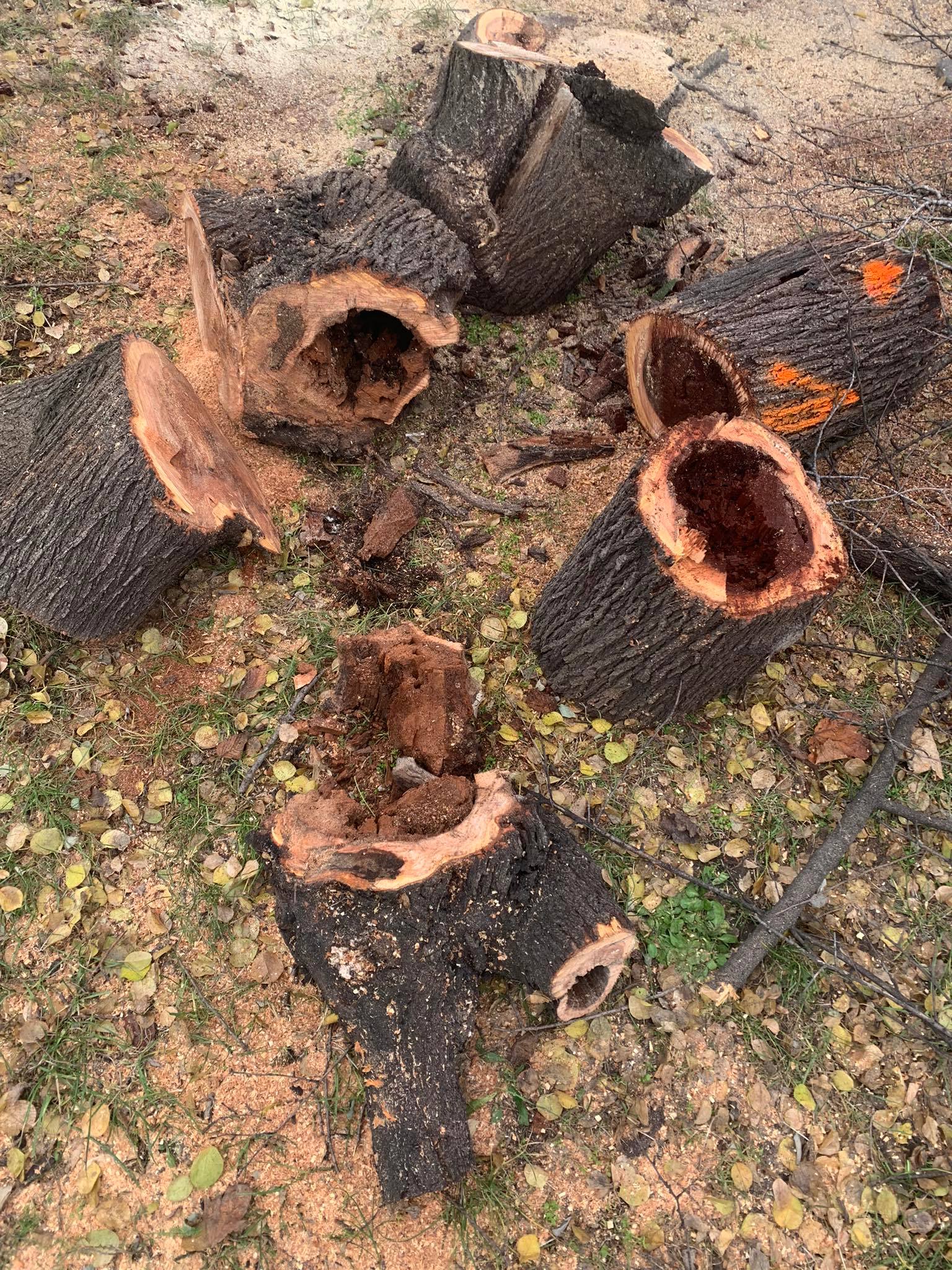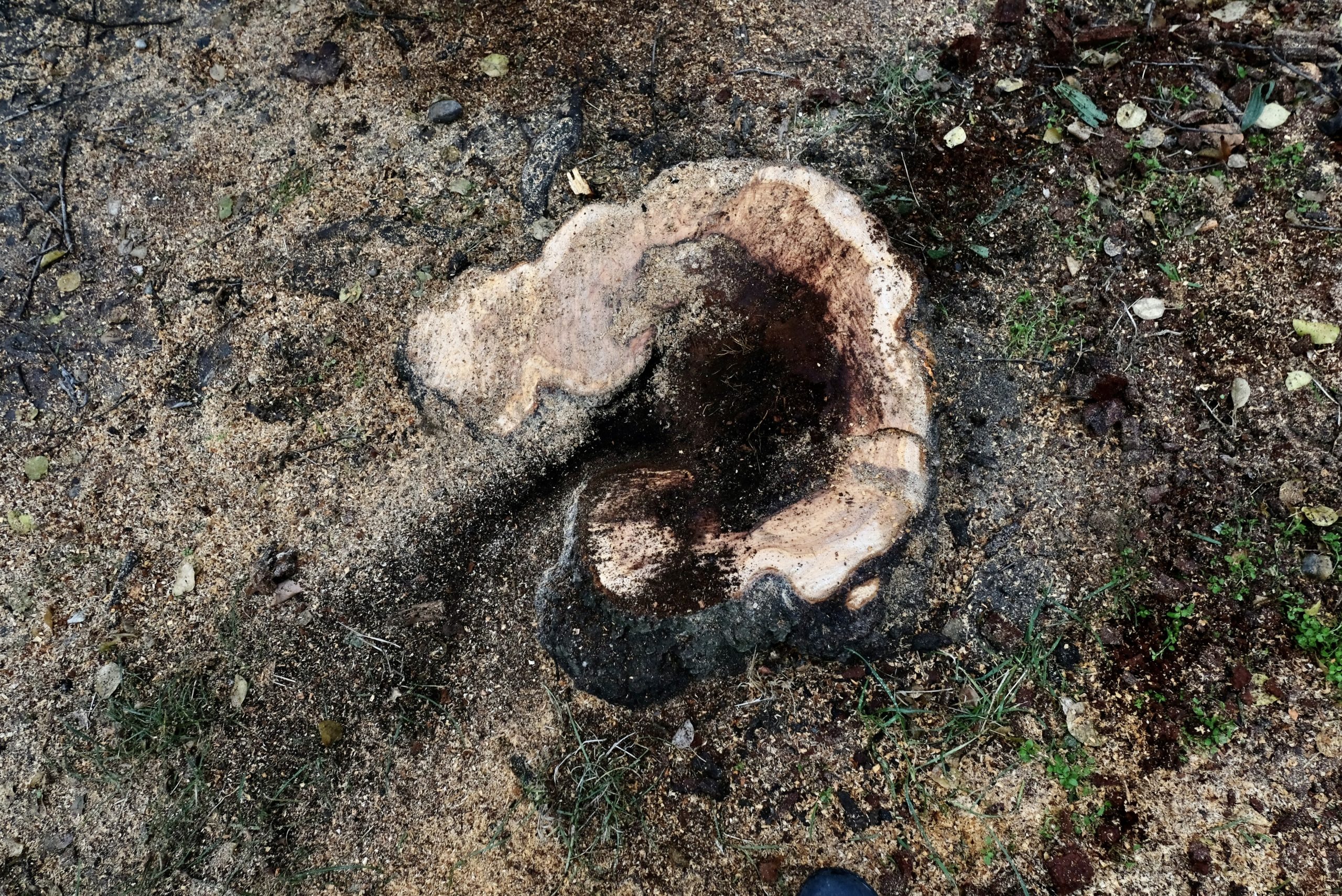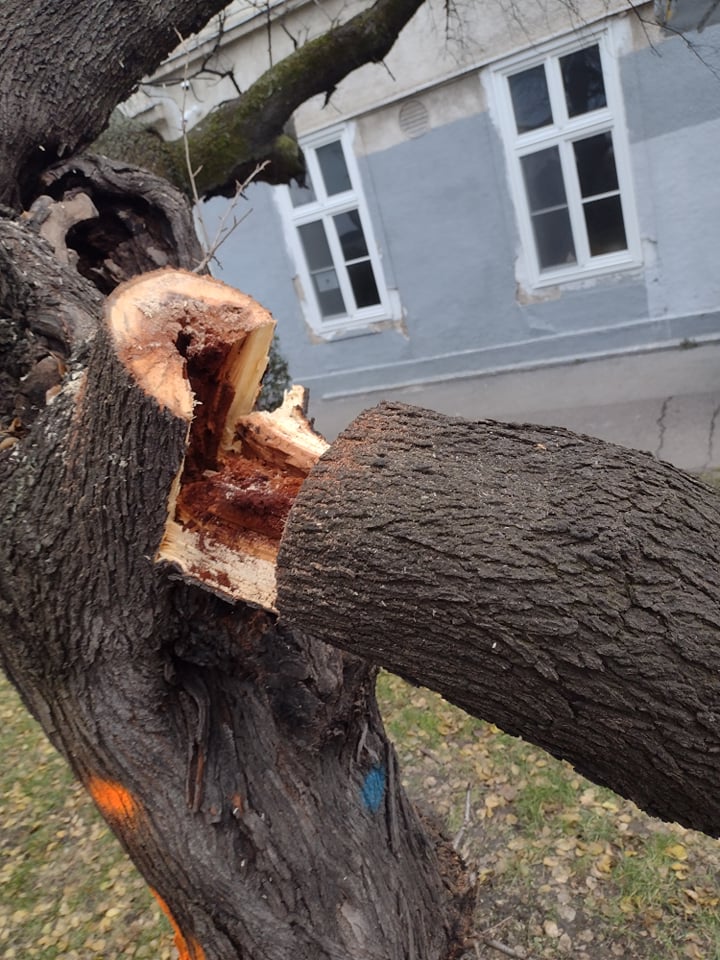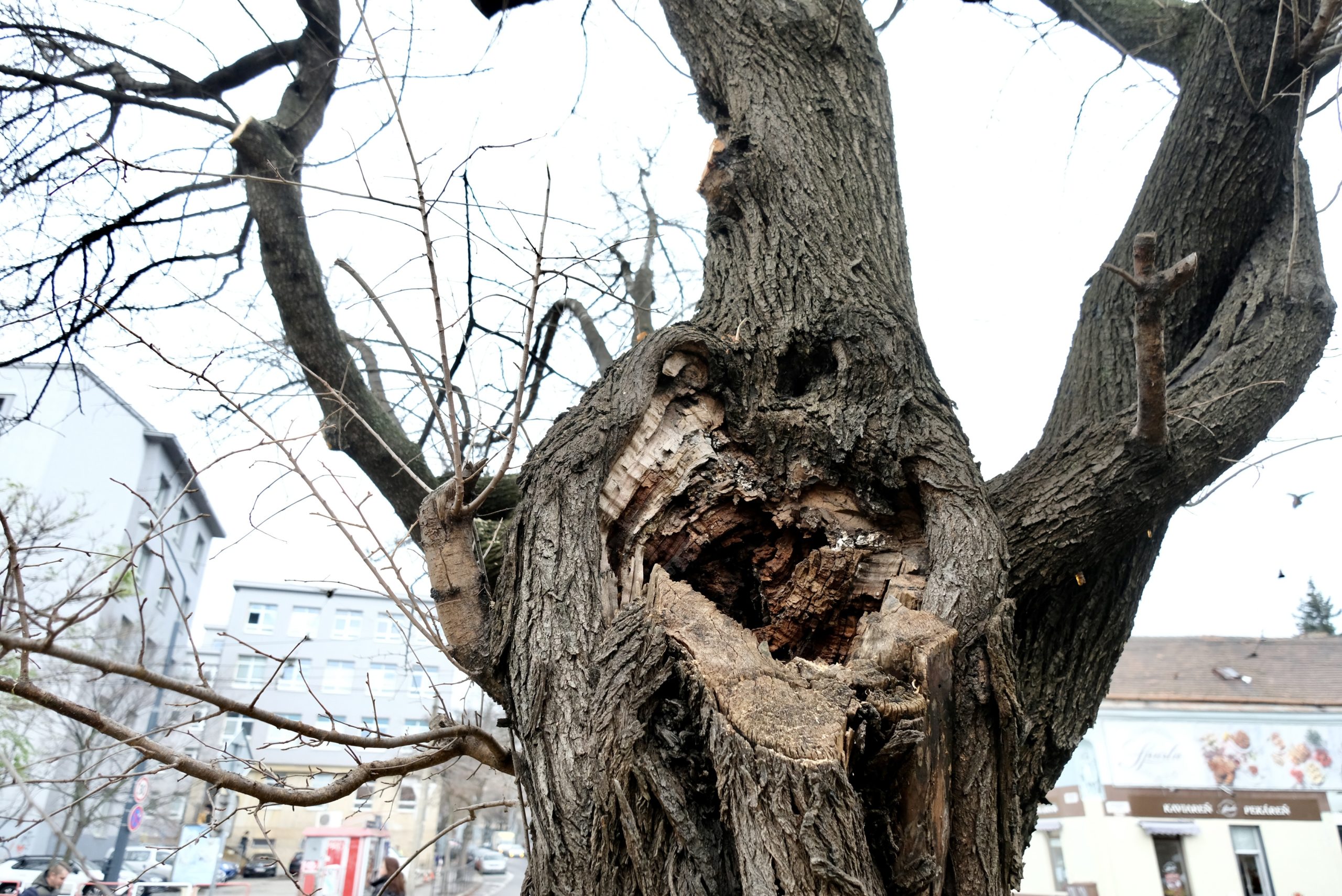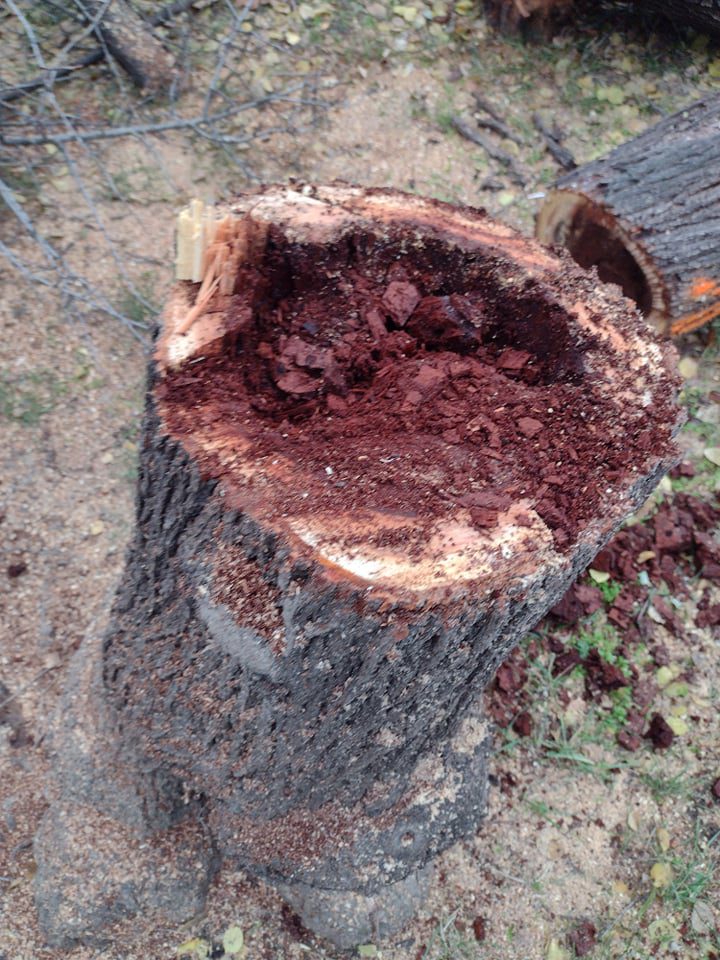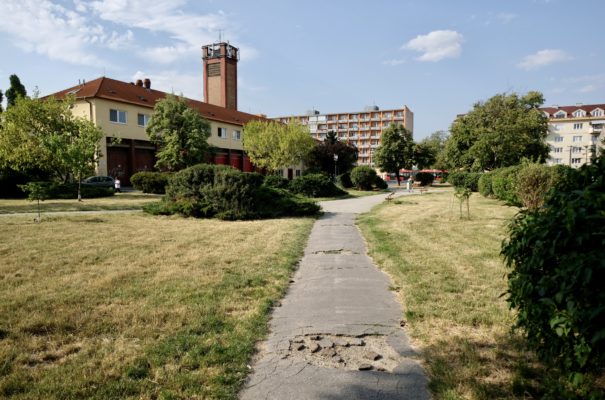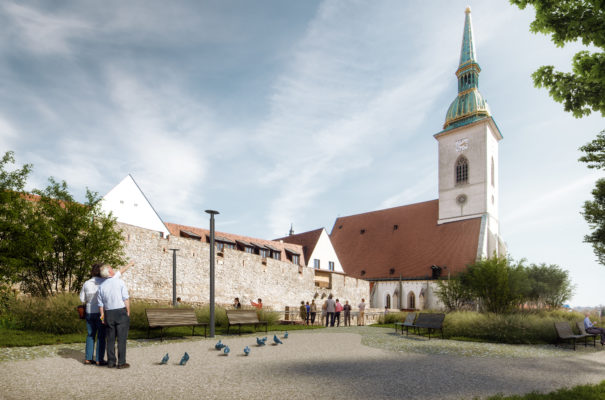Park on Radlinského Street
New trees will be added to the park to provide better microclimate and shade during hot summer days. All selected species are suitable for urban environments, tolerate high temperatures in summer and air pollution.
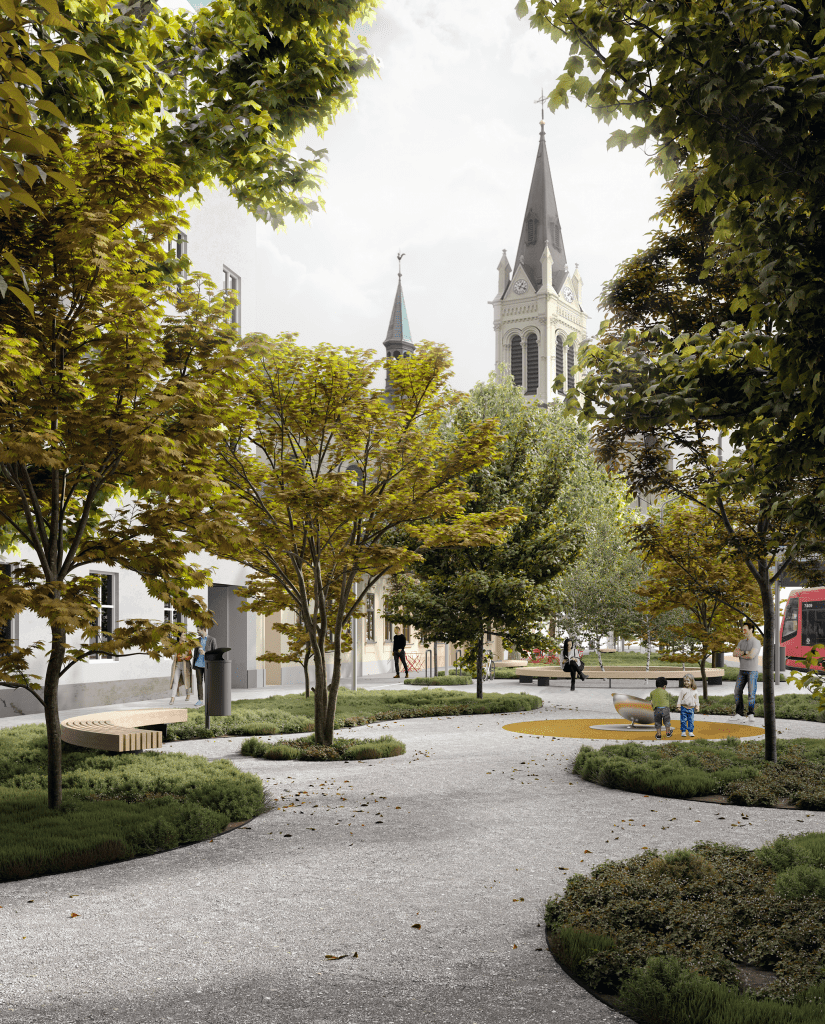
We updated the text on November 16, 2021.
The space on Radlinského will be renewed according to the Public Spaces Manual, also responding to the climate crisis.
Evergreen perennials that tolerate shady habitats and urban environments have been selected. These are mostly naturally occurring, low-maintenance species from Slovak forests. The pavement will be dry-laid, which will ensure the seepage of water into the ground underneath. The proposal also includes the extension of the bus stop.
Radlinského Street is known for its lively parterre, so the MAPA architects’ design sensitively complements the public space to suit its surroundings. Street lighting will not create a barrier effect but will be positioned to blend naturally into its surroundings. The project is implemented in cooperation with the city, GIB, Swiss Re and MAPA architects.
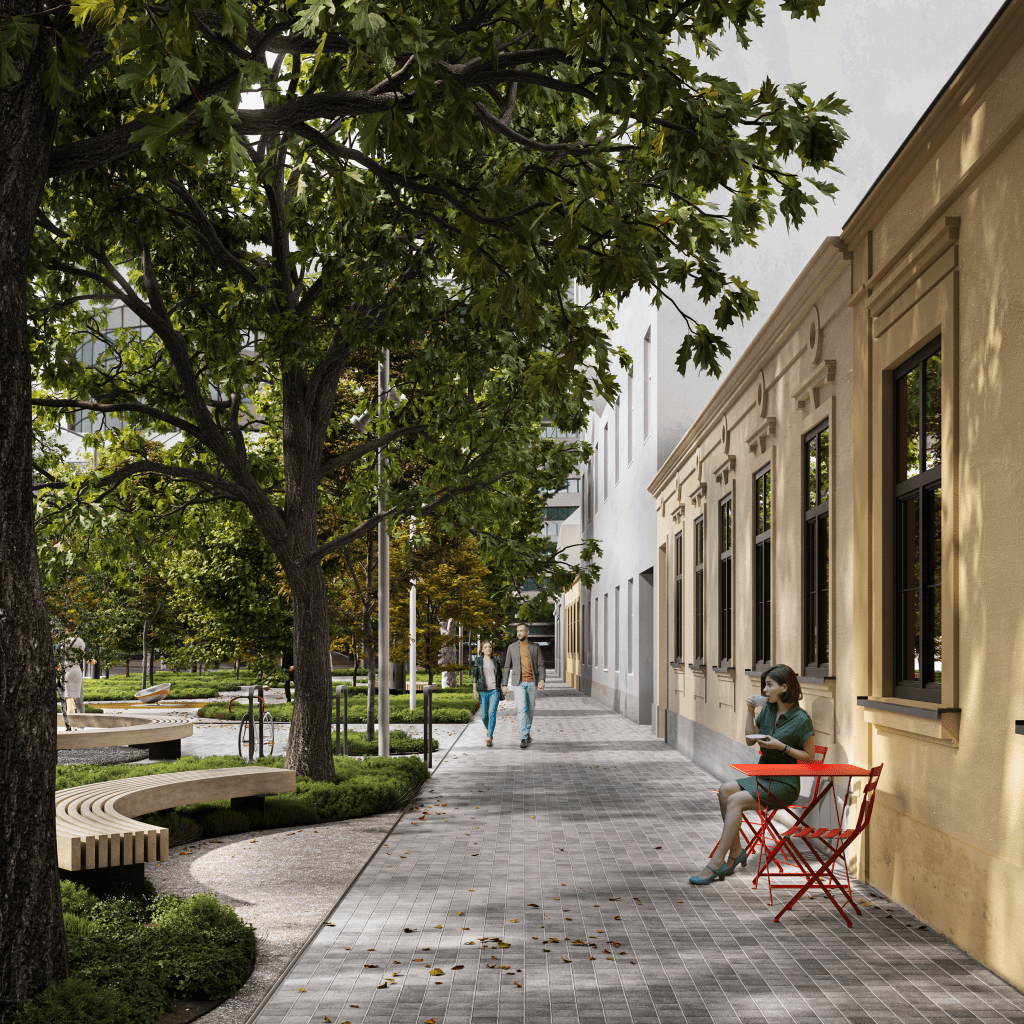
How Did the Project on Radlinského Street Come About?
- In the Living Places scheme, we comprehensively renovate public spaces according to the proposals of architects who design high-quality, safe and sustainable solutions for long-neglected places. We chose the space on Radlinského Street because it is a busy traffic junction in need of improvement. Enhancing the safety of people waiting for the connection, as well as people passing through this space, renewal of greenery, relocation of networks and new functional street furniture.
- In 2017, a preventive felling of trees was planned for this area. Municipal district Staré Mesto issued a felling permit, but it was postponed due to lack of a comprehensive project. Already in 2017, 9 trees were identified as dangerous and their life span was determined by experts to be a maximum of 5 years. This year’s arboricultural assessment determined that these trees are in poor condition, and may pose a hazard to passersby or property. They are at risk of a crown or branch breakage. The instrumental examination has revealed central cavities protruding into the trunks or trunk rot in some of the trees.
- The other 6 trees are now in a state of survival of several years. Leaving them in the area would prevent utility relocation and prevent further action, including new planting and tree replacement.
- Both the capital city and the Public Transport Company Bratislava have registered several suggestions to extend the area at the Blumentál stop on Radlinského Street in the direction of Rača due to dangerous collision situations.
- Up to 28,000 people get off and on at the Blumentál transfer junction on Radlinského Street in full operation every day, while at the stop in the direction of Račianske Mýto there are, according to the DPB model, almost 1,700 people during the busiest hour. Most of them wait for the connection at the stop for at least a few minutes.
- In addition to the city’s intention, the relocation of Slovak Telekom’s low-voltage network is also planned across the park. The procedure for a zoning decision has been initiated at the Old Town’s construction office as well. Due to this fact, we initiated the coordination and relocation of the other low-voltage network so that this area would be completely rebuilt in one construction move.
- The revitalisation of public spaces will be carried out in the Radlinského area, thanks to which the territory in the city centre will be systematically unified and improved.
How Is the Greenery in Radlinského Park Project Going to Change?
- Twenty new mature trees with a height of about 7 meters will expand the greenery.
- The crown area will increase tenfold, compared to the area of the crowns of the current trees, to 3,086.6 m2.
- 4,433 smaller perennial plants and 22 multi-stem shrubs with a crown at least 2.5 metres high will be added.
- The biodiversity in the area will increase with the new planting of more species.
- The lawn covers 80% of the area and is only replaced on well-trodden paths.
Why Doesn’t Tree Replacement Start in the Spring with the Project?
- 9 trees would be dangerous to pedestrians during the winter and waiting until spring may prove to be risky. Branches weighed down by snow could break at any time and injure passers-by.
- The trees received an arboricultural assessment stating they are in poor condition.
What Are the Assets of the Radlinského Space for Passengers?
- Waiting areas for passengers around the stop will be expanded by 90 m2.
- The comfort of passengers has increased thanks to new street furniture behind the public transport stop.
- Passenger safety is improved by increasing the space around the stop and by making dark areas more transparent.
- A camera system will be added.
What Are the Assets of the Park on Radlinského Street for People from the Neighbourhood?
- The residential building will be separated from the road by multi-stem shrubs and underplanting up to 50 cm in height, which can trap dust, noise and water.
- Completely new street furniture – benches, rubbish bins, bike racks, a play element for children and a drinking fountain for people walking through the area in the heat.
- Areas proposed for residential activities are preferentially concentrated in the non-residential portion of the site.
- We have included the space on a list of locations where the city will consider providing public restrooms in the future.
- Along the entire length of the area, new utilities, such as water supply and gas pipeline will be laid down, including connections for the objects in the area of the park.

Participation Process
- The Public Transport Company Bratislava collected suggestions from the general public, which indicated the need to extend the waiting area.
- Even before the project was presented to the public, the Old Town district was approached by the Department of Urban Greenery of the Capital City about the intention to replace the safety tree felling with new planting.
- Similarly, as in the case of other projects of the capital and MIB, the project was presented twice to the representatives of the Old Town district, while the district did not raise any objections or suggestions for improvement (beyond the above-mentioned meeting with the initiators of the petition).
- The project was also consulted with the MÚOP (Municipal Board for the Preservation of Monuments in Bratislava), the KPU (The Regional Monuments Board) and the Fire Brigade.
- From the beginning of the initiative, we inform the public about the projects well in advance and always respond to specific questions and suggestions from citizens.
- Representatives of the residents and the initiators of the petition met with representatives of the capital and MIB six times, online or in person. The project developers incorporated several suggestions and comments from the residents into the project.
Numerous meetings (interactions) with residents:
Interaction: Meeting with the petition initiators (May/June 2021)
Interaction: Meeting with the co-initiator of the petition and three other residents of the site (June 2021)
Interaction: Letter to petitioners and residents (summer 2021 – July/August)
Interaction: Letter to petitioners and residents (summer 2021 – July/August)
Interaction: Public meeting. The initiators of the petition were also present (October 2021)
Interaction: Meeting with the district Mayor Aufrichtová, where both the initiators of the petition and the residents of the surrounding flats were present (November 2021)
Scheduled meeting with the Mayor of Bratislava (November 2021)
In addition, a meeting of the local council of the Staré Mesto district was held to deal with the petition, but without inviting and hearing the opinion of the project developers (representatives of the MIB, the capital city, November 2021).
- After meetings with residents, comments from citizens were incorporated to reduce the number of benches. Based on comments from citizens, we have removed the bench seating in the area at the beginning of the park, away from the church.
- The crosswalks leading to the residential building were reduced and only one crosswalk was retained to cross along the front of the houses to the bus stop.








